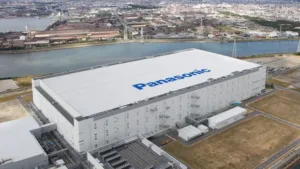Japan, of course, was a pioneering region for flat panel display development and in the last couple of weeks there has been good news and bad news about developments in the country.

The Bad News
The bad news, although not surprising, was that Panasonic has announced the end of production and development of its LCD fab in Himeji, Hyogo Prefecture in 2021 (although we hear that supply of existing products may go on a little longer).
The company has been making LCDs for a long time and was one of the last two large LCD makers in Japan – the other being Sakai Display Products (SDP) which was established by Sharp and is controlled these days by Foxconn. At one time, pretty well all the Japanese electronic majors had some kind of facility for making LCDs and the country was the key developer of TFT LCD production technology. Part of the reason was to support the development of notebook computers from Toshiba, NEC et. al.
However, quite a long time ago, in 2000, NEC said this in the Nikkei. At the time, a friend translated this from the Japanese for me:
“We have never abandoned the business of large sized LCD panel (15 inch and larger). However, we are still unable to invent a way to gain profit out of it”
“In the current large sized LCD panel business, the absolute factor to be a winner is how large the scale of production is. Under such a circumstance, what could make us ahead of the competition will be larger capital to sustain larger scale of production, but this is not the case with us.”
“Therefore, the large sized LCD panel business does not have very high priority for the moment amongst many of upcoming investments planned by our company. However, the story would be totally different once we find a way to differentiate ourselves not by scale of capital but technology. If this is the case, investing in the large sized LCD panel business will be of much greater significance.”
Really, that was very perceptive. Samsung was already the largest panel maker, with 20.1% of the market, LG.Philips with 14.7% and Hitachi still significant at 10.2% according to IDC/MIC in January 2001. In the same year, Matsushita (the name of the group including Panasonic at the time) formed a J/V with Toshiba that became TM Displays and, eventually, in 2012 became part of JDI (along with Hitachi and some of Sony’s business) that developed the firm’s small/medium panel business.
NEC eventually sold off its LCD business to Tianma of China after a period of focusing on specialist displays for, among others, industrial and medical applications.
Sharp was the most aggressive Japanese panel maker, building much of its brand positioning around its pioneering work with LCD, and was the first to G6 and to G10 in building new fabs, but hit financial problems and was eventually purchased by Foxconn.
Anyway, back to Panasonic.
The company was making IPS LCDs in Himeji as ‘IPS Alpha’ which was formed in 2005 as a J/V between Hitachi, Toshiba and Matsushita. It had a G6 that had a planned capacity of 25K substrates per month, to give a panel capacity of 200K 32″ panels per month.
In 2010, Panasonic took over the whole of IPS Alpha which became Panasonic LCD as a result. It built a new G8 in Himeji that started production with a planned final capacity of 810K 32″ TV panels per month. At the time, the company was still making PDPs (it started to stop R&D in PDP in 2012, when it changed its emphasis to OLED R&D). By 2013, Panasonic was already talking about the possibility of making OLEDs at the fab, although it never did this in volume (see the “good news”).
However, Panasonic was not prepared to go up to G10 to stay competitive in the TV panel market, so finally in 2016, (Panasonic Leaves TV Panel Production) the company decided to abandon the TV panel market and use the excellent reputation for quality to develop specialist panels. The company is well regarded for the quality of these panels, which include medical and automotive panels and also the dual cell panels that are used by a range of broadcast and content creation monitors from companies such as Sony, Eizo and FSI. It’s not clear at this stage who the obvious replacement supplier is, but it would surprise me if somebody didn’t try to buy the technology.
Hmmm – I had planned to move to the good news in this article, but as it’s getting a bit long, I’ll come back to the topic in a few days. (BR)

